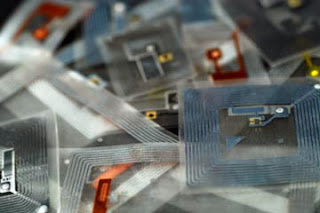Do u know how RFID works???
Long checkout lines at the grocery store are one of the biggest complaints about the shopping experience. Soon, these lines could disappear when the ubiquitous Universal Product Code (UPC) bar code is replaced by smart labels, also called radio frequency identification (RFID) tags. RFID tags are intelligent bar codes that can talk to a networked system to track every product that you put in your shopping cart.
Imagine
going to the grocery store, filling up your cart and walking right out
the door. No longer will you have to wait as someone rings up each item
in your cart one at a time. Instead, these RFID tags will communicate
with an electronic reader that will detect every item in the cart and
ring each up almost instantly. The reader will be connected to a large
network that will send information on your products to the retailer and
product manufacturers. Your bank will then be notified and the amount of the bill will be deducted from your account. No lines, no waiting.
RFID
tags, a technology once limited to tracking cattle, are tracking
consumer products worldwide. Many manufacturers use the tags to track
the location of each product they make from the time it's made until
it's pulled off the shelf and tossed in a shopping cart.
Outside the realm of retail merchandise, RFID tags are tracking vehicles, airline passengers, Alzheimer's patients and pets.
Soon, they may even track your preference for chunky or creamy peanut
butter. Some critics say RFID technology is becoming too much a part of
our lives -- that is, if we're even aware of all the parts of our lives
that it affects.

No comments:
Post a Comment